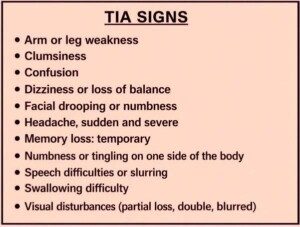If your body suddenly feels like it wants to pull or veer to one side, could this mean a transient ischemic attack?
If you’ve recently experienced the sensation that your body was pulling to one side, do not blow off such a symptom.
“Sensation of body ‘wanting to go one side’ can be interpreted as veering to one side while walking, very likely might be a TIA,” says Ivan Mikolaenko, MD, a board certified neurologist of 20+ years based in New York with subspecialty certification in neurocritical care.
Think of it this way: What else could explain such an oddball sensation?
You may be wondering, what is it about a transient ischemic attack that would cause you to feel as though your body was wanting to pull to one side?
The TIA could be cutting off blood flow to the part of the brain that controls that side of the body, making motor control and sensory perception impaired.
What you might actually be experiencing is a heaviness on one side, and if one side of your body feels or seems heavier than the other, it will seem like it’s being pulled in that direction.
“The manifestation of TIA can be protean [extremely variable], and the symptoms of TIA are as many as there are brain functions,” says Dr. Mikolaenko.
“But typically TIA symptoms will point to a specific brain region or its vascular territory.
“Veering to one side or another might be due to cerebellar dysfunction, and vertebro-basilar TIA should be thought of.”
If you’re suddenly overcome with the feeling that your body is being pulled to one side, or feels heavy or numb on one side — have someone immediately drive you to the ER, especially if you have risk factors for a TIA or stroke:
Over Age 50
Don’t Work Out; Sedentary Lifestyle
Obese
Diet High in Processed Foods
Smoker
Family History of Stroke
Diabetes
Poor Cholesterol Profile
Diagnosis of Atrial Fibrillation
TIA Is a Warning a Stroke May Be Coming
You have to wonder how many people who’ve suffered from a massive stroke — in the few months prior to it — had had a TIA but didn’t inform anyone about it.
Perhaps they didn’t even know they were having a TIA and attributed the odd sensation of being pulled to one side as anxiety related or maybe due to lack of sleep or having had too much to drink the day before.
Or maybe they wanted to mention the symptom, but at the time, nobody was around, and they simply forgot about it.
A TIA is a significant risk factor for a future stroke, and it serves as an alert that the individual’s vascular health needs immediate attention.
Awareness campaigns for stroke (symptoms are the same as a TIA) focus on only a handful of sudden signs: sudden weakness or paralysis on one side; clumsiness; facial drooping; speech difficulty; trouble with vision; mental confusion.
We often don’t hear about the more unusual symptoms such as the feeling that your body is being pulled to one side, feeling that one side of your body is suddenly heavy or difficulty swallowing.
Any sudden changes as described above warrant prompt medical attention.

Conditions treated by Dr. Mikolaenko in the intensive care setting include strokes, ruptured aneurysms, trauma-related brain and spinal cord injuries, seizures and brain swelling, infections and tumors.
 Lorra Garrick has been covering medical, fitness and cybersecurity topics for many years, having written thousands of articles for print magazines and websites, including as a ghostwriter. She’s also a former ACE-certified personal trainer.
Lorra Garrick has been covering medical, fitness and cybersecurity topics for many years, having written thousands of articles for print magazines and websites, including as a ghostwriter. She’s also a former ACE-certified personal trainer.
.











































